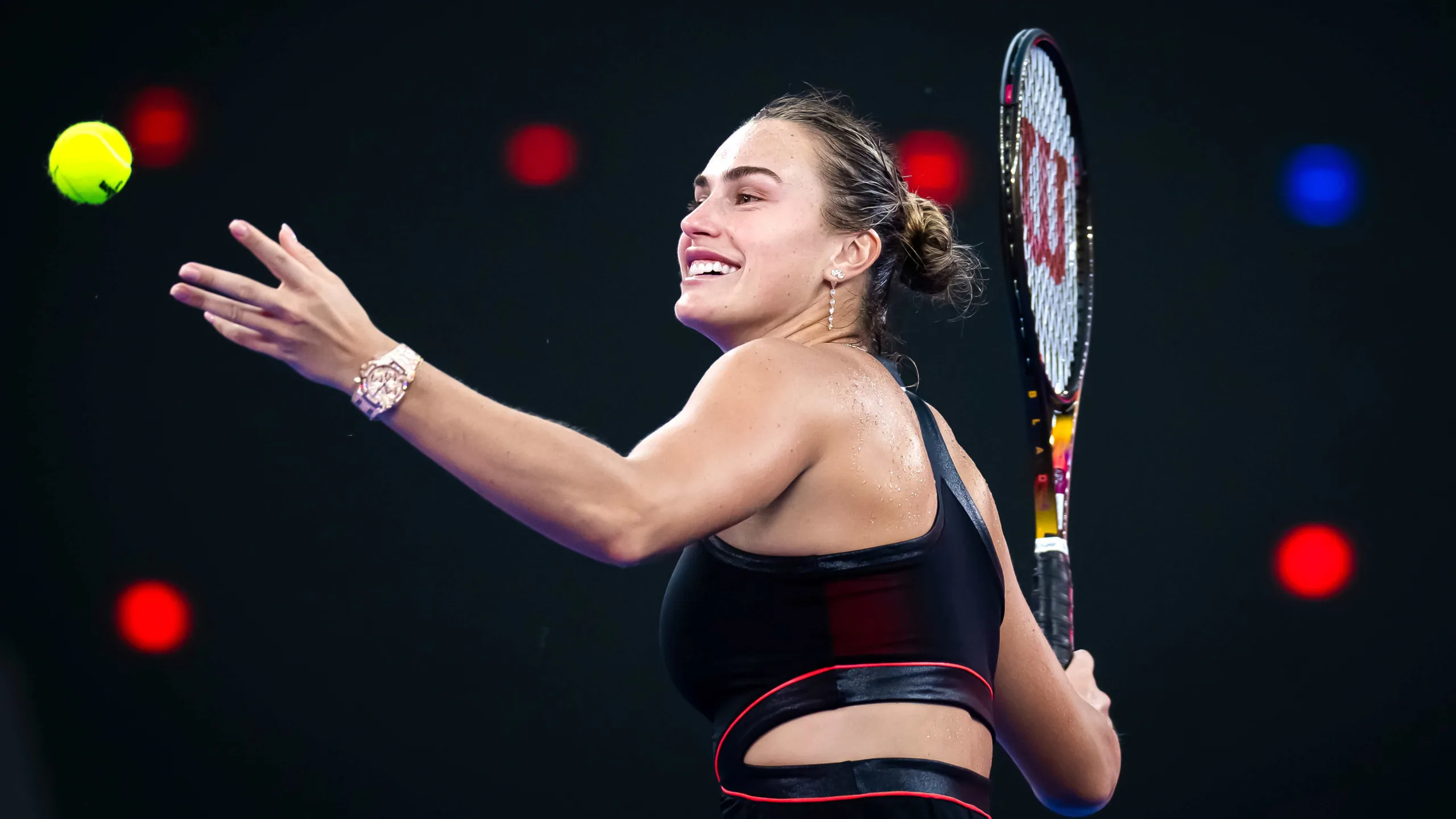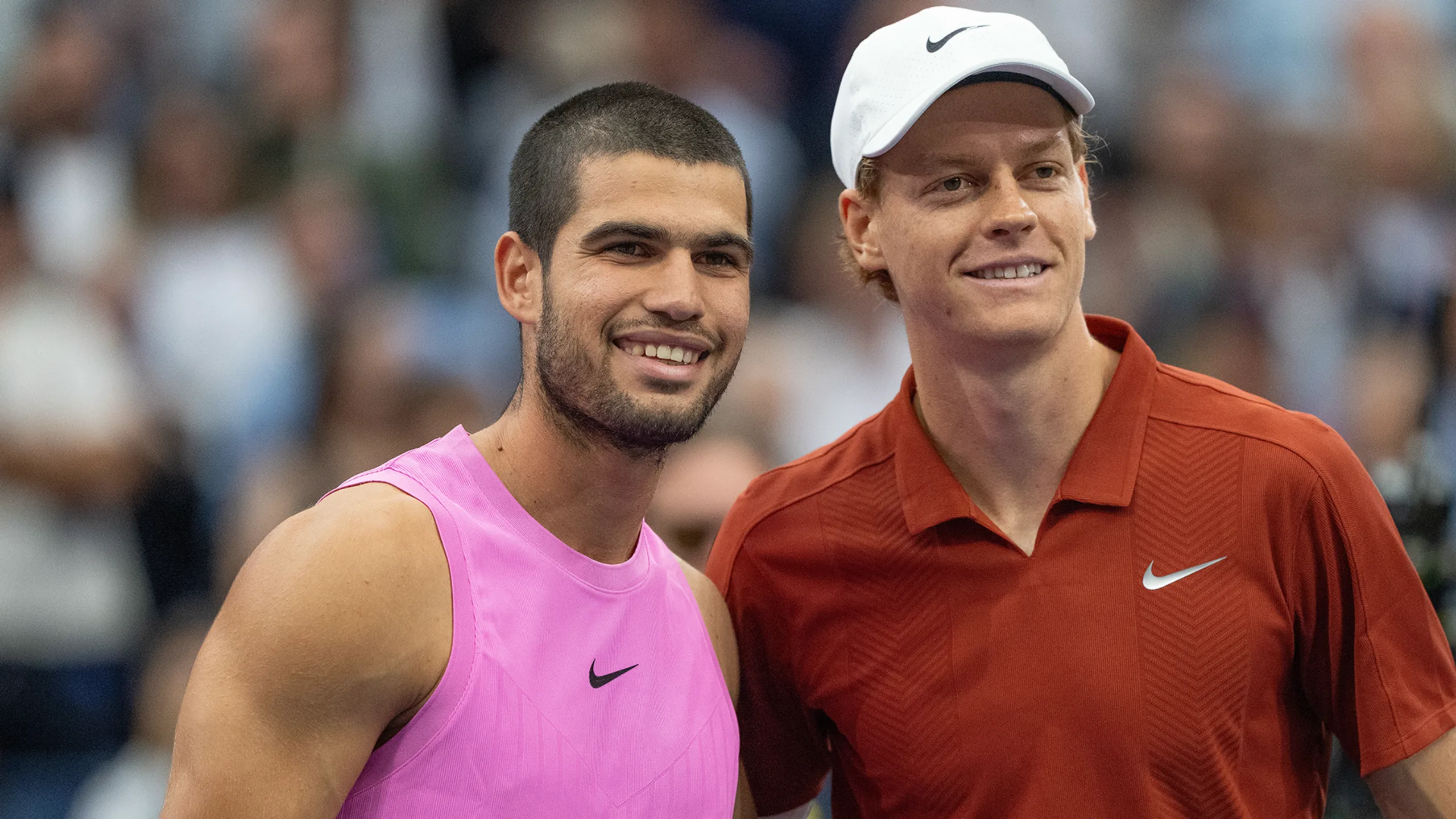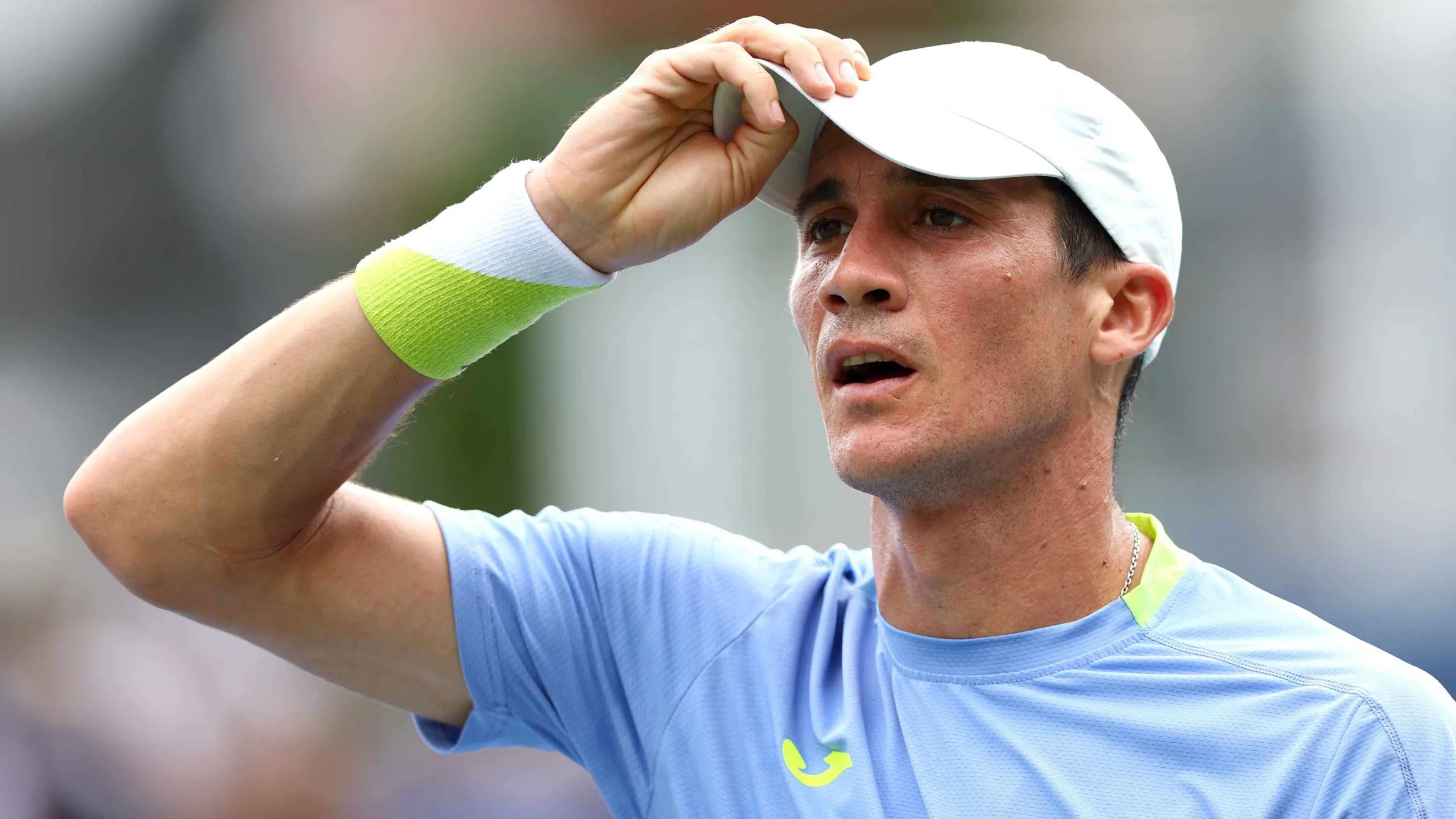Grand Slam Player News Wimbledon
Amanda Anisimova vows to return stronger after being ‘frozen’ with nerves during Wimbledon final defeat
Anisimova showed resilience by completing her on-court interview after the final.

It was billed as the Wimbledon women’s final that no one expected, it finished as a match that American rising star Amanda Anisimova will want to forget.
The 23-year-old always knew she was up against it, playing in her first grand slam final against a five-time major champion who has seemingly reinvented her game on grass.
But even the biggest Iga Świątek fan would never have predicted the 6-0, 6-0 thrashing that played out on Centre Court on Saturday.
The demolition job took less than an hour. It was also the first time since 1911 that a Wimbledon women’s final was won without the champion dropping a single game.
Everything went wrong for Anisimova, while everything went right for Świątek. The perfect storm, with two very different outcomes for either player.
“I think I was a bit frozen there with my nerves and maybe the last two weeks I got a bit tired,” a very poised Anisimova told reporters during her post-final press conference.
“It was a bit tough to digest, obviously, especially during and right after. It’s not how I would have wanted my first grand slam final to go.
“I think I was a little bit in shock after as well, but I told myself I’ll definitely come out stronger after this.”
Despite the heavy defeat in the final, we must not forget the incredible tournament that Anisimova has had at SW19 this year.
No one really tipped the world No. 12 for a title run on the grass, there were simply too many better players, with too much experience in this competition.
But as the big names dropped out of the women’s draw, Anisimova kept getting closer to her maiden grand slam final.
Then came a semifinal against world No. 1 Aryna Sabalenka. Ask Anisimova today and she might say she wished her tournament ended after that brilliant win.
The American showed everything that is great about her game against Sabalenka: Her booming backhand drawing gasps from the Centre Court crowd who started to fall in love with the youngster.
But, in truth, none of that form was on display during Saturday’s final. Her serve was left wanting and 28 unforced errors just demonstrated what state of mind she was in.
In her post-match comments, Anisimova said how she had struggled with the heat during the semifinal and thought that maybe could have caused her level to drop in the final.
She also said she felt fatigue during her warmup, but didn’t want to take anything away from her opponent’s “incredible” performance.
Showing courage in defeat
Straight after the match, Anisimova somehow mustered the courage to conduct her on-court interview, something that has become tradition at Wimbledon over the decades.
After brushing away the tears, she managed to speak so eloquently about what must have felt like one of the most difficult moments of her career.
But while she explained how she simply “ran out of gas” in the final, the love she showed her family and friends in the player’s box spoke volumes about the journey she’s been on.
In 2023, Anisimova stepped away from the sport, deciding not to touch her racket for months while she combatted what she described as burnout.
The time away from tennis was to help her own mental health, which had suffered after several seasons on the hamster wheel that is the professional tennis tour.
If bouncing from hotel to hotel is not enough, each tennis match is like a psychological game of chess. It’s no wonder that teenage prodigies, like Anisimova was, can quickly get tired of it all.
During the break, Anisimova said she learned a lot about herself, spending time with the people she loves and exploring new hobbies, one of which was art.
In 2024, she returned and set out proving people wrong.
After her semifinal win at Wimbledon, Anisimova told reporters that people had said she would never reach the top of tennis again after taking such a long break.
She previously said it was a “special” feeling to show how wrong doubters were at SW19 this year.
“My fighting spirit has gotten me to the final today,” she said as her tournament came to an end.
“It wasn’t me playing perfect. There were matches where I struggled and I wasn’t playing to my full potential, but I think just me staying focused and fighting my way through certain moments and focusing and also lifting myself up and trying to not get negative on myself was the most important thing.”
No one needs to tell Anisimova that there will be brighter moments in her career to come.
If anything, this tournament has shown her game is good enough to reach a grand slam final while still having plenty of areas to improve – and that’s exactly what she’s promised to do going forward.
First, though, the more important things. Anisimova vowed to spend some much-needed time with her family and friends after they showed so much support throughout the tournament.
Whatever comes next in her career, though, you get the sense it will be driven from the feeling she felt on Centre Court during this year’s final.
“There’s a lot of improvement,” she said. “If anything, I think it’s more experience for me on how to handle nerves. It’s my first grand slam final, so at least I have that experience now.”
Grand Slam Player News WTA
Sabalenka Clinches 2025 Year-End No. 1 After Dominant, Consistent Season
Sabalenka ends 2025 as year-end No. 1 after a season with four titles and relentless consistency. In

Aryna Sabalenka has secured the 2025 year-end WTA No. 1 ranking, regardless of her result at the WTA Finals in Riyadh. Having finished 2024 at No. 1 as well, she becomes the 13th woman in WTA rankings history to end consecutive seasons at the top.
Sabalenka’s 2025 campaign combined peak moments with relentless consistency. She captured four titles, including the fourth Grand Slam title of her career at the US Open. She also reached four additional finals, among them two major finals at the Australian Open and Roland Garros.
Her form across the season was remarkably steady. Sabalenka advanced to the quarterfinals or better at 13 of the 15 tournaments she played, a run that underpinned her hold on the top ranking from the opening week through the close of the year.
That uninterrupted stretch at No. 1 places her in an even smaller group. She is the seventh player in WTA rankings history to hold the No. 1 ranking for every week of a calendar year, and only the third woman to do so this century, after Serena Williams and Ashleigh Barty, who achieved the feat twice each.
The combination of Grand Slam success, four titles, multiple major finals and near-constant deep runs made Sabalenka the season’s defining player. Securing the year-end No. 1 spot for a second straight year confirms a period of sustained excellence and adds a notable chapter to WTA history.
Whatever unfolds at the WTA Finals, the statistical and historical landmarks of Sabalenka’s season are already established. She finishes 2025 as the sport’s year-end No. 1, with a set of achievements that underline both peak performance and remarkable consistency.
ATP Grand Slam Roland Garros
Books on Alcaraz and Sinner Clarify a New Chapter in Men’s Tennis
Two books on Alcaraz and Sinner illuminate how their rivalry reshaped men’s tennis in 2024–25. Today

Two recent books arrive at a pivotal moment in men’s tennis, documenting the rapid ascent of Carlos Alcaraz and Jannik Sinner and the rivalry that has defined 2024 and 2025. Mark Hodgkinson’s Being Carlos Alcaraz supplies the biographical detail and environment that shaped Alcaraz, while Giri Nathan’s Changeover examines the rivalry and the broader cultural moment that surrounds it.
Hodgkinson traces Alcaraz from El Palmar to Juan Carlos Ferrero’s academy in Alicante, and highlights formative episodes: the five-year-old who “loved to bash the ball against the backboard” and a lockdown stint at the academy that accelerated his progress. The book also describes Alcaraz’s psychological training. “When they spoke on Mondays, Alcaraz wasn’t allowed to tell Cutillas whether he had won or lost his latest match, only how he thought he had played,” Hodgkinson writes. “Giving attention to the result would have reduced Alcaraz’s tennis to winning or losing, to being a success or a failure, and Cutillas didn’t want that for him.” Hodgkinson adds, “Cutillas was hoping that as a boy, and maybe deeper into his tennis life, he would be less interested in his results than in whether he was improving and meeting the standards he was setting for himself.”
Nathan’s Changeover is more literary and frames the players within the modern rivalry narrative. He writes that Alcaraz’s game “combined so many traits that didn’t belong together into a single psychedelic point.” Nathan also offers a vivid aside describing Daniil Medvedev as “the expansive plane of his forehead, those cunning beady eyes, the physiognomy of a supervillain plotting to take down the power grid.”
Both books contrast the two men’s temperaments and origins. Sinner’s upbringing in Sexten and his late shift from skiing to tennis are presented alongside anecdotes about his planning and precision, including the moment he told his coach “to stay f-ing calmer” and then dismissed him. Sinner called it “very, very strange” to come from a skiing village and become a tennis player.
Together the books explain how these players rose out of a long era of stasis at the top and set expectations for what the next phase of men’s tennis might look like.
ATP Grand Slam US Open
Facundo Bagnis begins voluntary provisional suspension after positive test
Facundo Bagnis accepts provisional suspension after positive test for hydrochlorothiazide in August..

Facundo Bagnis has begun a voluntary provisional suspension after testing positive for hydrochlorothiazide, the International Tennis Integrity Agency announced. The 35-year-old Argentine’s positive result came during qualifying at the US Open in August, and the ITIA classified the substance in the category of diuretics and masking agents.
Bagnis lost in the first round of US Open qualifying, a defeat that was his sixth consecutive loss in Grand Slam qualifying matches. He reached a career-high ranking of No. 55 in 2016.
The player was notified of the test result this month and opted to start a provisional suspension last week. The ITIA process allows a provisional suspension to be credited as time served if a later ban is imposed.
In a social media statement, Bagnis denied knowingly taking any banned substance and said he has assembled legal and medical support to pursue a possible cross-contamination defense. He wrote: “I want to be clear, I’ve never knowingly taken anything prohibited, that’s why I’m confident in my innocence and that the truth will come to light and reveal a fair outcome,” Bagnis wrote on Instagram , calling the situation ‘one of the worst moments of my professional career.’
“The news has taken me completely by surprise,” he added. “Since the beginning, I have cooperated with the ITIA and been completely and totally transparent in order to clear everything up as quickly as possible.
“Additionally, I have chosen to accept a voluntary provisional suspension in order to dedicate my full attention to this process and to demonstrate that I have nothing to hide.”
Bagnis said he is working with a team that includes lawyers and a medical toxicologist as he prepares his response to the ITIA. The agency’s announcement confirmed the substance and the provisional suspension but did not detail the next steps in the investigation.
-

 Analytics & StatsATPUS Open2 months ago
Analytics & StatsATPUS Open2 months agoSinner: Predictability Cost Me in US Open Final as Cahill Reveals Djokovic’s Counsel
-

 Analytics & StatsUS OpenWTA2 months ago
Analytics & StatsUS OpenWTA2 months agoAfter the US Open: Six WTA takeaways from the 2025 tournament
-

 Analytics & StatsFinalsWTA2 months ago
Analytics & StatsFinalsWTA2 months agoCan Iga Swiatek Overturn Aryna Sabalenka for 2025 Year-End No 1?







